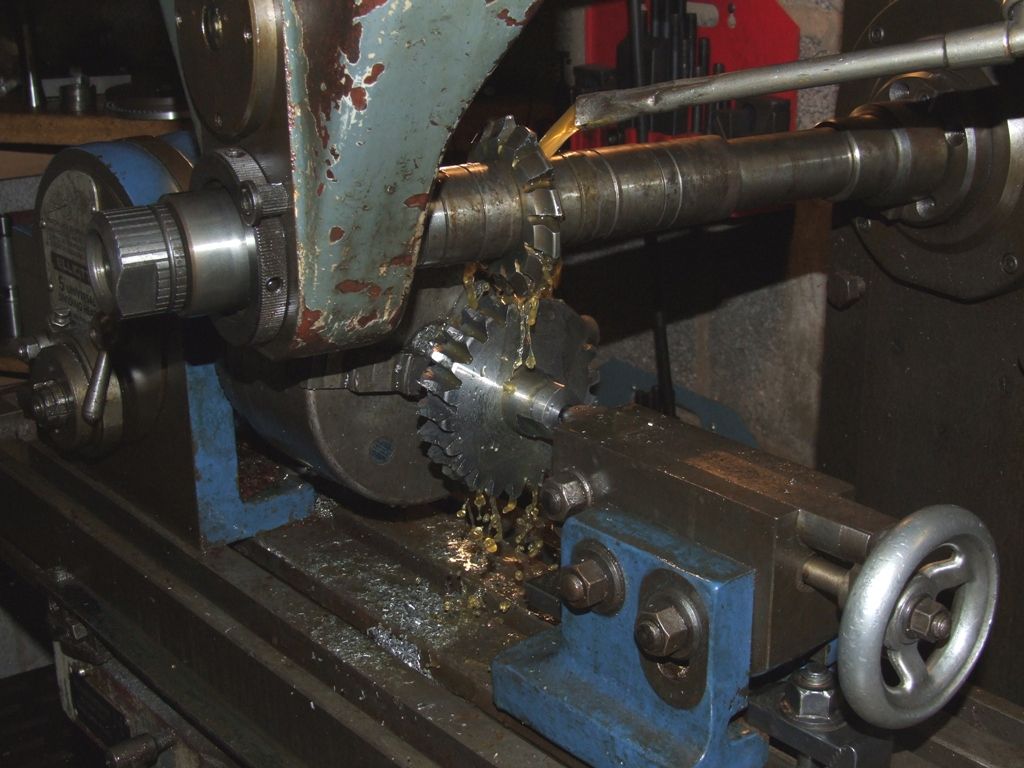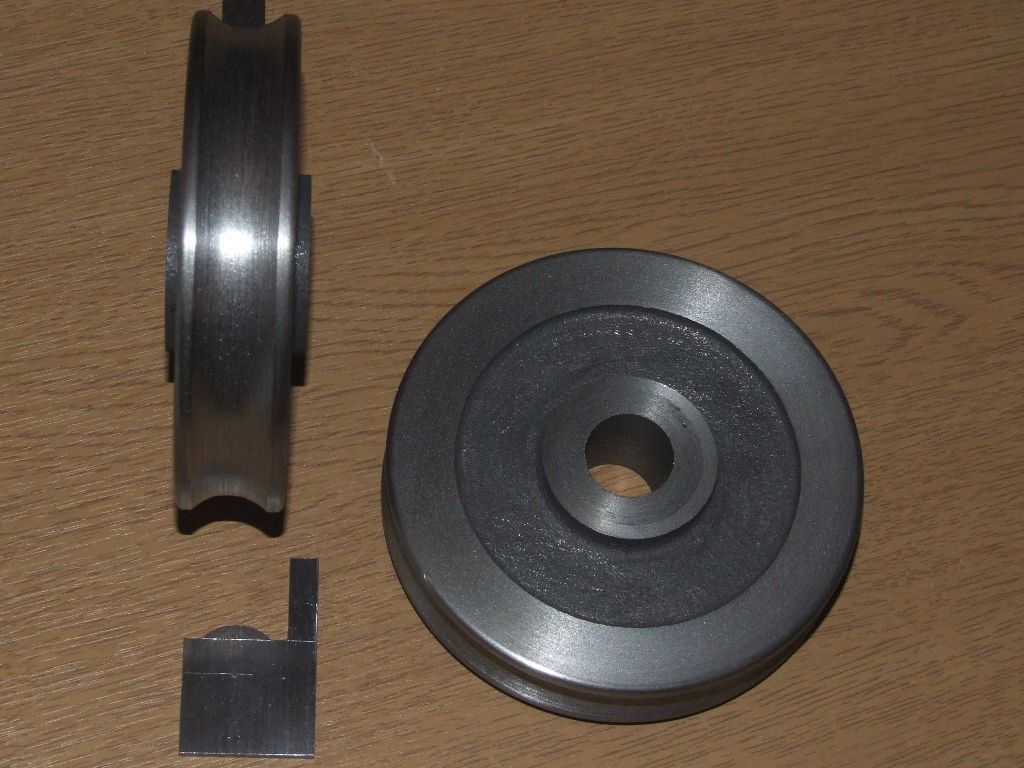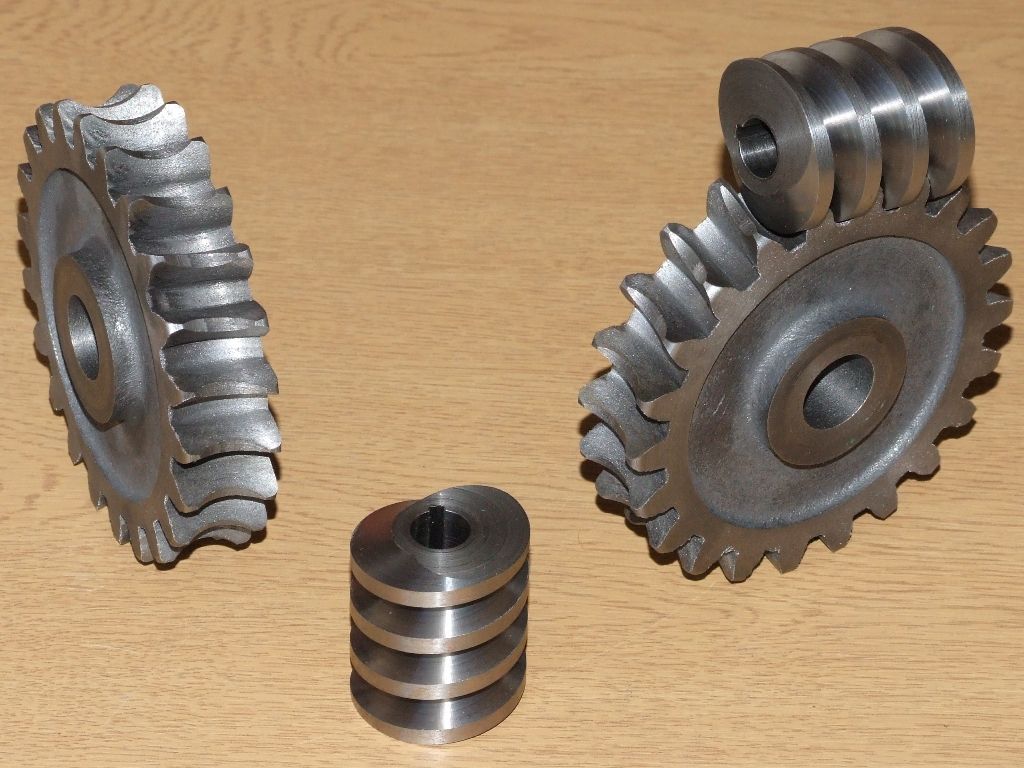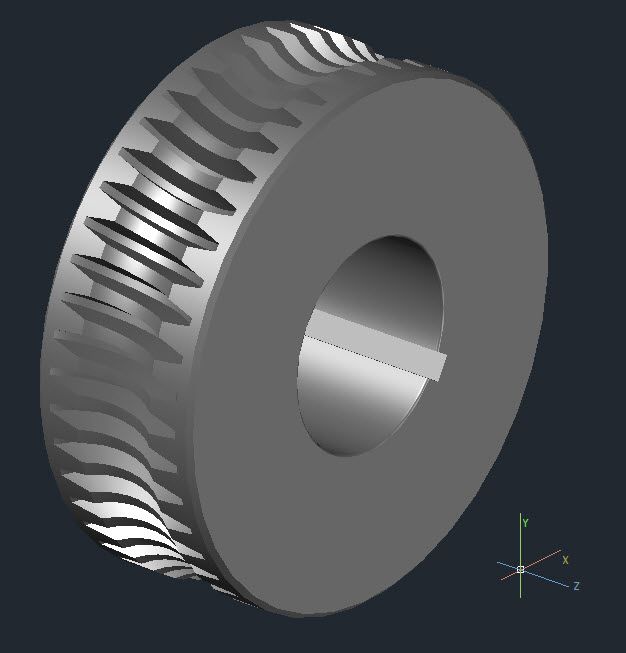Jason: I was concerned that the hob wouldn't cut that well in hot rolled, as it has zero rake, and my experience of hot rolled is that it tends to 'smear' if the tools aren't sharp with positive rake. However, having had a close look under a magnifying glass I don't think that the hob was the basic problem on the throat of the worm wheel. As designed there should be a 25 thou gap between the throat of the worm wheel and the core diameter of the worm, and hob. But it looks like I didn't quite get the hob centred over the worm wheel, so at maximum depth of cut the core of the hob has contacted the throat of the worm wheel on one side and smeared some of it over a portion of the throat. Carelessness on my part, and being in a hurry to see if the hob would actually work, or if the whole experiment would end up in discombobulation.
This is where the theory and practice diverge. The books glibly say centre the cutters (involute for gashing and the hob) over the blank and commence cutting. But they don't tell you how to centre the b***y cutters! I should have made a better job of centring the hob, but the involute cutter for gashing is more of a problem. The instructions say centre the cutter in both X and Y over the blank and then swivel the table. But the cutter will only stay centred if the blank is exactly over the point where the table swivels? So I swivelled the table first and then attempted to centre the involute cutter. In the Y direction, at right angles to the worm wheel axis, I used the trapped ruler method, which I think is probably good enough. However, in X, aligned with the worm wheel axis, I winged it by estimating when the cutter was just nicking each side of the throat and took that as the centre. I suspect that the throat wasn't precise either, cut by hand feeding a button insert tool followed by a file. All rather crude, but not really the main purpose of the experiment. The main purpose was to test whether I could make a home made hob that would then free hob a worm wheel. From that point of view I think the experiment was successful.
However, when I make the real worm wheels in cast iron there are a number of secondary things that I need to pay more attention to:
1: Ensure that the throat is properly dimensioned and is central on the blank – possibly by making a measurement jig, or a form tool.
2: Take more care to centralise the gashing cutter in X and Y
3: Take more care to centralise the hob in X
As an aside one can see an number of 'facets' on each of the teeth. I assume this is where the individual teeth of the hob have taken a cut, more teeth would give a smoother finish, but result in weaker teeth.
Regards,
Andrew
PS: I plan to bring all, or some, of the worm and worm wheel experiments to the next SCMTEG meeting.
Stovepipe.











